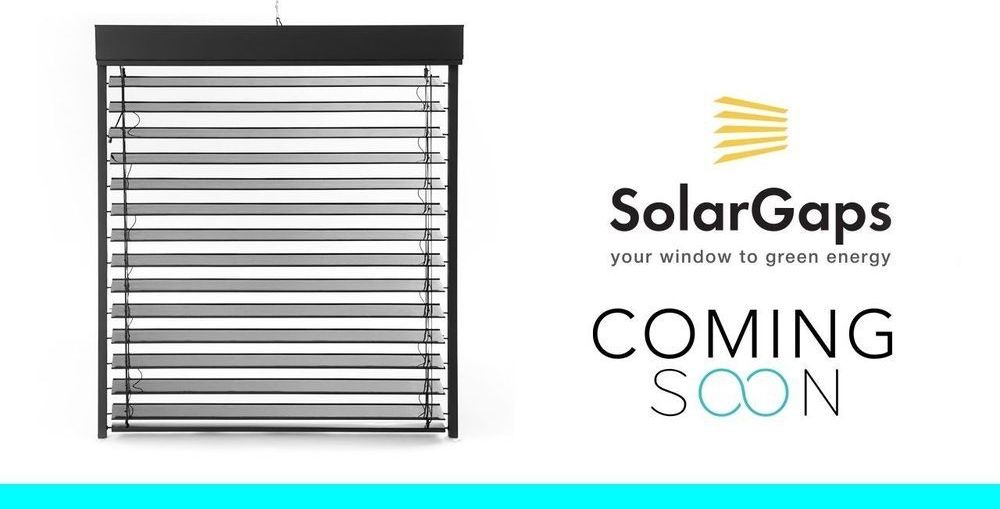Jan 31, 2019
Window Blinds Double as Solar Panels
Posted by Victoria Generao in categories: solar power, sustainability
Beat the heat while generating electricity with solar panel blinds


Beat the heat while generating electricity with solar panel blinds

Behold the new black gold. Dark and warm, it oozes water and teems with beneficial properties. It even harbors precious metals.
And boy does it stink.
Call it the excrement economy. Between the rise of fecal transplants and water strained from latrine sludge, the poop market is hot. Besides removing toxic waste, the commodification of crap could mean big bucks, especially in the developing world. Sounds crazy, but look at what happened with used cooking oil — now processed into biofuel instead of dumped into landfills — which went from being worth nothing in the early 2000s to $3.30 a gallon in 2011, according to the Utah Biodiesel Supply.
Continue reading “Turning manure into gold: The excrement economy” »
Small tweaks in component ratios generate electronically different layers from the same material to create transparent transistors.
Worldwide demand is growing for transparent conducting oxides for use in solar cells, flat panel displays, smart windows and semiconductor-based consumer electronics. KAUST researchers have engineered a zinc-oxide-based transparent material that displays tunable electronic properties depending on the tweaking of a new type of dopant.
Transparent electronics rely on indium tin oxide, a transparent and electrically conductive material that has an exorbitant cost due to the scarcity of indium. Zinc-oxide-based materials, such as hafnium-doped zinc-oxide materials, are expected to offer affordable, green and abundant alternatives to indium tin oxide. However, hafnium-doped zinc-oxide materials typically require high deposition temperatures and display inadequate performance for real-life device applications.
A Chicago-based entrepreneur says many industrial power users can save money, get more electricity, and reduce greenhouse gas emissions by using the energy they already consume more efficiently. It’s called recycling energy — capturing waste heat and turning it into power.
This green office in the Netherlands produces its own energy thanks to solar panels. See the other sustainable design features, like a green roof and more.
No matter how abundant or renewable, solar power has a thorn in its side. There is still no cheap and efficient long-term storage for the energy that it generates.
The solar industry has been snagged on this branch for a while, but in the past year alone, a series of four papers has ushered in an intriguing new solution.
Scientists in Sweden have developed a specialised fluid, called a solar thermal fuel, that can store energy from the sun for well over a decade.
Solar rays are a plentiful, clean source of energy that is becoming increasingly important as the world works to shift away from power sources that contribute to global warming. But current methods of harvesting solar charges are expensive and inefficient—with a theoretical efficiency limit of 33 percent. New nanomaterials developed by researchers at the Advanced Science Research Center (ASRC) at The Graduate Center of The City University of New York (CUNY) could provide a pathway to more efficient and potentially affordable harvesting of solar energy.
Monash researchers have unlocked a key process in all human cells that contributes to diseases like cancer and neurodegenerative diseases as well as ageing. The discovery reveals how cells efficiently get rid of cellular junk, which when it accumulates, can trigger death and the health problems associated with getting older.
Autophagy is the ‘clean-up crew’ of the cell—used by cells to break-down debris like broken proteins, bits of cell membrane, viruses or bacteria. To capture this trash, cells use specialised membranes to trap the cargo for recycling into new parts and energy. Without efficient autophagy cells become choked by their own damaged components, which can contribute to the development of a range of diseases, including diabetes, muscular dystrophy, Parkinson’s and Alzheimer’s disease.
Dr. Michael Lazarou’s laboratory from the Monash Biomedicine Discovery Institute have today published data in Nature Communications that debunks previously held beliefs about how cells target their trash. Cells target different types of cargo by using ‘autophagy receptors’, which can bind the cargo as well as the ensnaring membranes. Until recently these autophagy receptors were thought to recruit the membranes to the cargo, but research led by Dr. Benjamin Padman from the Lazarou lab now shows that this is not the case.
Continue reading “Teaching human cells to clean house to delay aging and fight neurodegeneration” »
